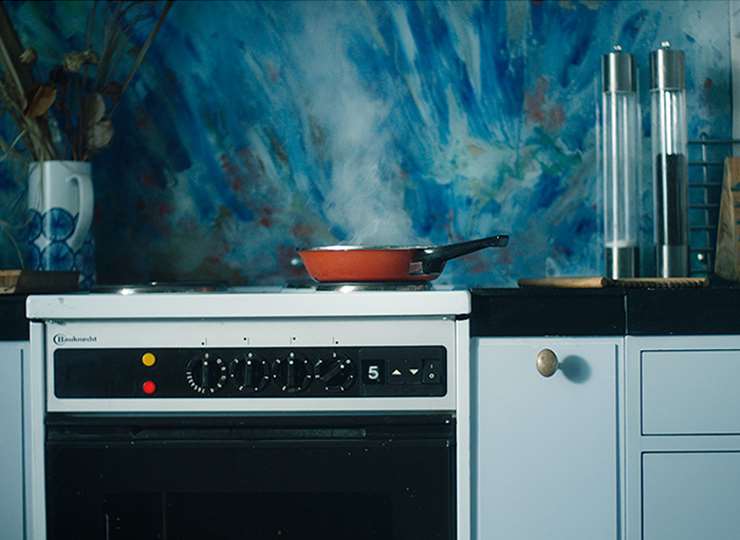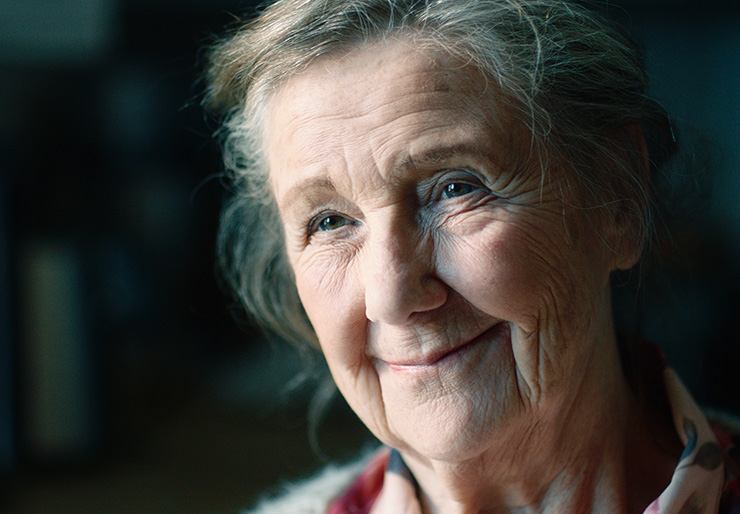

Have a chat about fire safety, and what you can do to minimise the risk
Older people are at a higher risk of dying in a fire. Have that important chat about fire safety, identify fire hazards in their home and what to do if there's a fire.
Risk increases with age
People over the age of 70 are between four and five times more likely to die in a fire compared to others. The percentage of elderly people in the population is increasing, and they are living at home for longer. Good fire preparedness can save a life, and often only simple measures are needed.
Have a chat about fire safety
Talking about fire hazards at home, and what simple steps can be taken to prevent fires, can make the difference between life and death. Here are some of the risks you can talk about. We have also made a checklist for you if you want to improve fire safety for an elderly relative.
Mind the stove
The stove is by far the biggest cause of house fires. It’s easy to forget a pan on the stove, or fall asleep while something is cooking. Talk about how important it is not to leave saucepans or casseroles unattended while cooking.
Try to identify the situations that pose the most risk. Can you suggest any alternatives to using the stove? Also check whether a stove guard has been installed. A stove guard automatically turns the stove off if any of the rings get too hot. It prevents pans from boiling dry or overheating, and also halts other dangerous situations that could lead to a fire.
Oven gloves, tea towels, newspapers and other objects kept near the stove can quickly catch fire, and these flames will spread quickly. Flames that reach a greasy extractor fan will spread even faster. Talk about keeping the area around the stove clean and tidy.
Can you find any other storage solutions as an alternative to using the stove as a storage area? It’s a good idea for family and friends to take turns at checking the extractor fan and cleaning it when necessary.
Check electrical appliances
The stove is the main culprit when it comes to fires, but other electrical appliances can also cause fires if they are used incorrectly. Find out whether the resident is using electric heaters and other electrical appliances safely. Electric wall heaters and electric radiators that are covered or allowed to become dusty can easily catch fire.
Appliances that use a lot of electricity (over 1 kW) should not be plugged in via extension leads. Extension leads can become overloaded, which causes them to heat up which can then result in a fire.
Listen for the smoke alarm
An early warning increases someone’s chances of getting out in time. Check that the home is fitted with smoke alarms, and that these are working. Do a test to make sure the resident can hear the smoke alarm – even from the bedroom. Remember to test the smoke alarm once a month, and to change the battery once a year. If the resident cannot hear the smoke alarm, contact your local Centre for Assistive Technology to find out whether you can borrow equipment such as a smoke alarm with a strobe light or vibration pad.
Also talk about how to get out of the home if the smoke alarm goes off. Check that escape routes are not blocked by furniture, rugs or other obstacles. It’s also a good idea to carry out a fire drill – practice makes perfect, especially in emergency situations.
Can the resident lift the fire extinguisher?
What should they do if they discover a fire? Planning for this and discussing it makes it much easier to tackle in reality. Check that the home has a fire extinguisher, and that the resident can use it. Every home must have extinguishing equipment in the form of a domestic fire hose or fire extinguisher. If the fire extinguisher is too heavy, consider providing an additional device such as a fire blanket or aerosol fire extinguisher. But remember that the most important thing is for the person inside to get themselves out.
Avoid naked flames
Many chandeliers and ornaments are designed for candles, but these can easily turn into small bonfires. Talk about the dangers of candles, especially when combined with other materials that can easily catch fire. There are plenty of fire-safe alternatives to candlelight, such as battery-operated table lights.
Be careful with lit cigarettes
Lit cigarettes are a huge fire hazard. If you know any elderly people who smoke, ask them how and when they smoke when they are at home. Perhaps they could be taking steps to reduce the risk of fire. For example, there is a huge difference between the risk of smoking outdoors and smoking in bed. A fire blanket can also help to reduce the risk of fires caused by cigarettes.
Checklist of what to discuss when you have a chat about fire safety
Being aware of fire hazards and getting into good habits can often prevent fires. If you are a friend or relative, we have made a checklist of the most important fire prevention measures for you to discuss when you have a chat about fire safety.
When you have a chat about fire safety, you should discuss
- Food preparation and fire safety in the kitchen
- Safe use of electrical appliances
- Alarms and escape routes
- How to put out a fire
- Candles and smoking
As a friend or relative, you could
- Install a stove guard
- Clean the filter in the extractor fan above the stove
- Check that curtains, cloths, newspapers and furniture are at a safe distance from electric wall heaters
- Check that the smoke alarm is working and can be heard all over the home
- Check there is a fire extinguisher, and that the resident can use it
- Get rid of chandeliers, dangerous decorative lights and unsteady candlesticks
- Make sure the resident develops fire-safe smoking habits